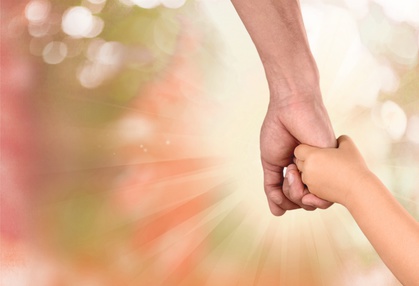
3rd degree tear caused by shoulder dystocia
A 3rd degree tear is a rare occurrence in vaginal childbirth where the mother experiences a tear that affects the lining of the vagina, the skin and muscle of the perineum (area between the vagina and anus) and the anal sphincter. It is thought that perhaps as few as 2 -3 % of first-time mothers will experience a tear of this severity.
Why does this occur?
As the baby emerges through the vaginal opening, the skin will need to stretch to allow the baby easy passage. There are a number of factors that influence the likelihood that a tear will occur at this point, such as the age of the mother and the weight of the baby.
However, the position of the baby during birth is also a significant factor.
Shoulder Dystocia
In most births, the baby presents head first and, generally-speaking, this is the position that is least likely to produce a perineal tear. However, sometimes the baby's head emerges from the opening of the vagina, but the rest of the body does not follow shortly after. This is because the baby's anterior shoulder has become stuck behind the mother's pubic bone. This is known as shoulder dystocia.
The chances of this occurring are influenced by the shape and size of the mother's pelvic region in comparison to the size and shape of the baby's shoulders. There is some evidence that the weight and size of babies is increasing, which may suggest that this problem will increase.
There is also some evidence to suggest that the proportions of babies of diabetic women are more likely to cause shoulder dystocia.
However, less than 1% of women are thought to experience this occurrence.
How to deal with shoulder dystocia
If your baby's shoulder seems to have become stuck, it will be necessary for you to have help in the delivery of your baby.
- You are likely to be positioned on your back or on all fours
- The midwife or doctor may press down on your abdomen to try to re-position the baby
- The doctor may consider an episiotomy (perineal cut) to ease the passage of the baby
- The doctor or midwife may try to adjust the baby's position by inserting their hand in the vagina
The effects of shoulder dystocia
A 3rd degree tear is more likely where the baby has experienced shoulder dystocia, as the vagina and perineum will have undergone greater pressure and trauma than with a straightforward vaginal delivery.
If the doctor has given you an episiotomy to ease the birth, this may also increase the likelihood of a severe tear occurring.
It is also possible that the mother will experience greater blood loss following shoulder dystocia.
Responding to a 3rd degree tear
A 3rd degree tear should be identified through thorough examination of the mother immediately after childbirth and the mother's injury should be repaired in an operating theatre by a skilled surgeon. She is likely to require a course of antibiotics to reduce the chances of developing an infection whilst the tear repairs.
If a 3rd degree tear is not repaired successfully shortly after the birth, the mother may go on to develop a fistula and experience faecal incontinence, requiring on-going surgery.
Medical Negligence
An undiagnosed or poorly treated 3rd degree tear can cause unnecessary pain and distress at a time when a mother needs to be bonding with her baby. If you have been the victim of inadequate care after the birth of your baby, contact us at Glynns Solicitors to discuss whether you can make a claim for compensation.
Please call us on 0800 234 3300 (or from a mobile 01275 334030) or complete our Online Enquiry Form.



